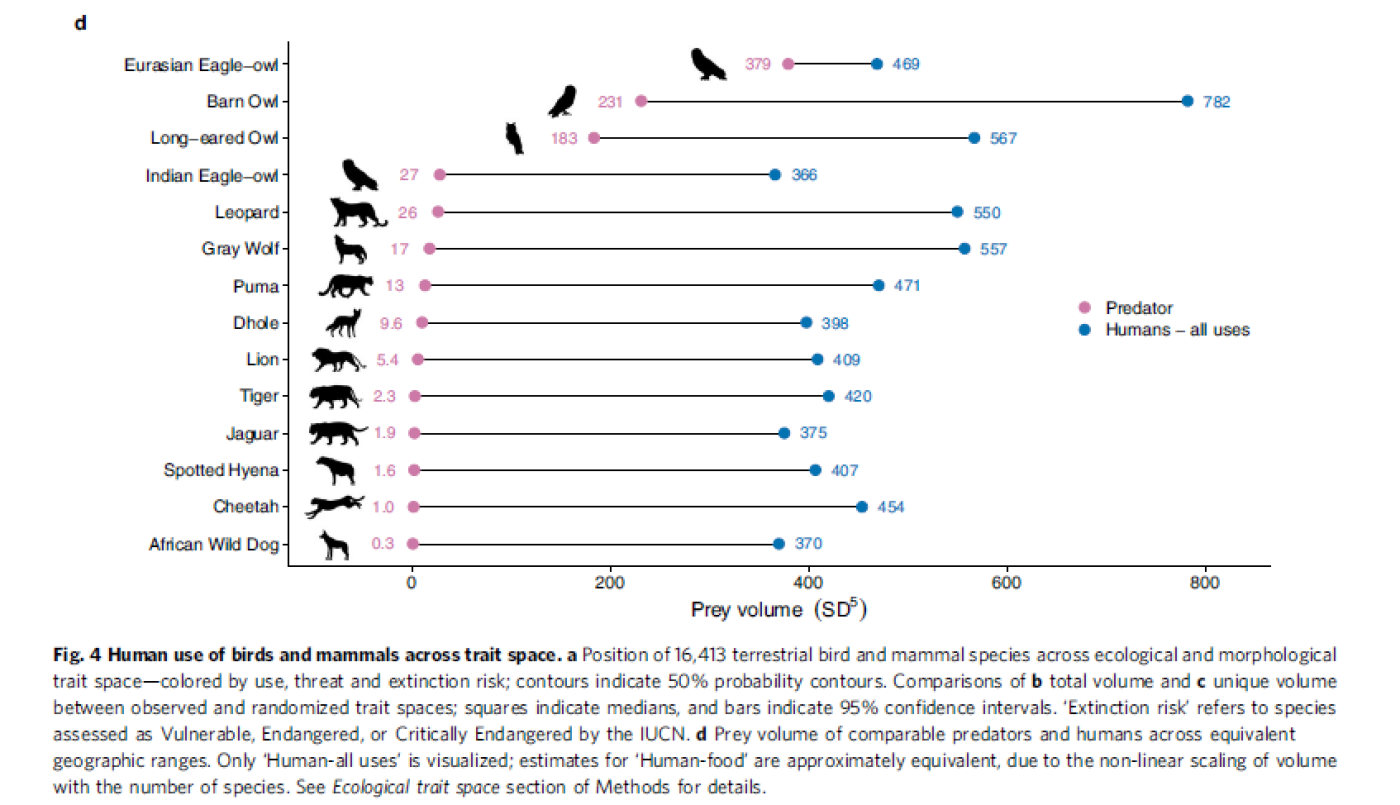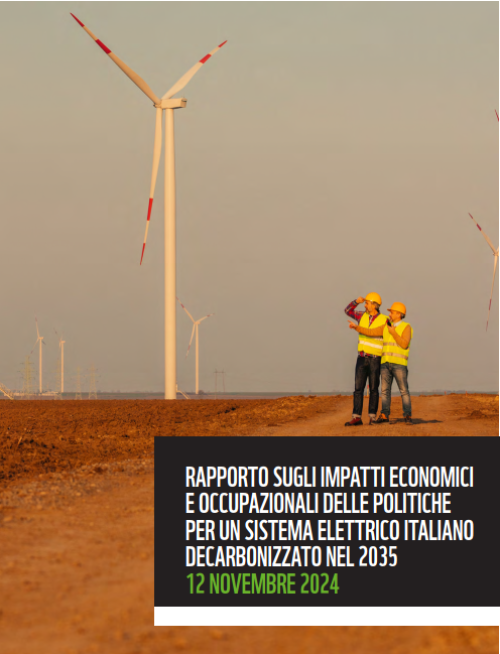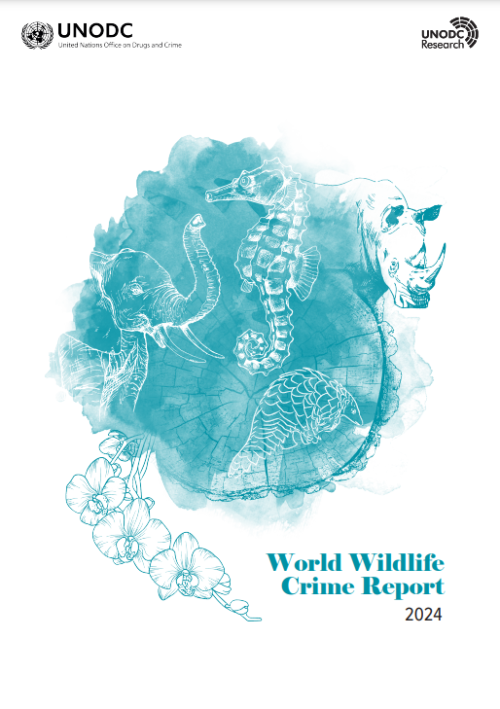Humanity’s diverse predatory niche and its ecological consequences
Article - Communication biology
Although humans have long been predators with enduring nutritive and cultural relationships with their prey, seldom have conservation ecologists considered the divergent predatory behavior of contemporary, industrialized humans.
Recognizing that the number, strength and diversity of predator-prey relationships can profoundly influence biodiversity, here we analyze humanity’s modern day predatory interactions with vertebrates and estimate their ecological consequences. Analysing IUCN ‘use and trade’ data for ~47,000 species, we show that fishers, hunters and other animal collectors prey on more than a third (~15,000 species) of Earth’s vertebrates. Assessed over equivalent ranges, humans exploit up to 300 times more species than comparable non-human predators. Exploitation for the pet trade, medicine, and other uses now affects almost as many species as those targeted for food consumption, and almost 40% of exploited species are threatened by human use. Trait space analyses show that birds and mammals threatened by exploitation occupy a disproportionally large and unique region of ecological trait space, now at risk of loss. These patterns suggest far more species are subject to human-imposed ecological (e.g., landscapes of fear) and evolutionary (e.g., harvest selection) processes than previously considered. Moreover, continued overexploitation will likely bear profound consequences for biodiversity and ecosystem function.



